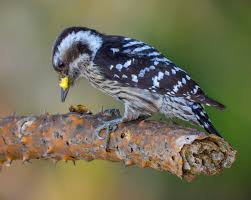
Grey-capped Woodpecker
Dendrocopos canicapillus
Order:
Family:
Size:
20 to 22 centimeters (8 to 8.7 inches)
Weight:
50 to 70 grams (1.8 to 2.5 ounces)
Taxonomy:
Louis Jean Pierre Vieillot in 1818
Short Description:
Grey-capped Woodpecker (Dendrocopos canicapillus) is a medium-sized woodpecker species found in Pakistan. It is characterized by its distinctive grey crown, black and white barred back, and a red patch on the nape of the neck in males. Females lack the red patch. This species has a sturdy, chisel-like bill adapted for drilling into trees to extract insects and larvae. It also has a strong, clinging feet for gripping onto vertical surfaces. The Grey-capped Woodpecker emits a sharp, repetitive drumming sound during territorial displays and for communication.
Far far away, behind the word mountains, far from the countries Vokalia and Consonantia, there live the blind texts. Separated they live in Bookmarksgrove right at the coast
Grey-capped Woodpecker is distributed in various forested habitats across Pakistan, including the Himalayan foothills, the northern regions such as Gilgit-Baltistan, Khyber Pakhtunkhwa, and parts of Azad Jammu & Kashmir. It can also be found in some woodland areas in Punjab and Balochistan provinces. This species prefers mixed deciduous and coniferous forests, as well as wooded ravines and riverine habitats.
Grey-capped Woodpeckers are primarily insectivorous, feeding on ants, beetles, larvae, and other insects found beneath the bark of trees. They use their strong bills to excavate holes in tree trunks and branches, creating cavities where they forage for prey. They also drum on trees to establish territories and attract mates. During the breeding season, which typically occurs from April to June, they construct nests within tree cavities, lining them with wood chips. Both parents participate in incubating the eggs and feeding the young. Outside of the breeding season, Grey-capped Woodpeckers may form loose foraging groups, especially in areas with abundant food sources.
Far far away, behind the word mountains, far from the countries Vokalia and Consonantia, there live the blind texts. Separated they live in Bookmarksgrove right at the coast
About Photographer : Hello World
Facebook
Twitter
Instagram
Flicker
LinkedIn
